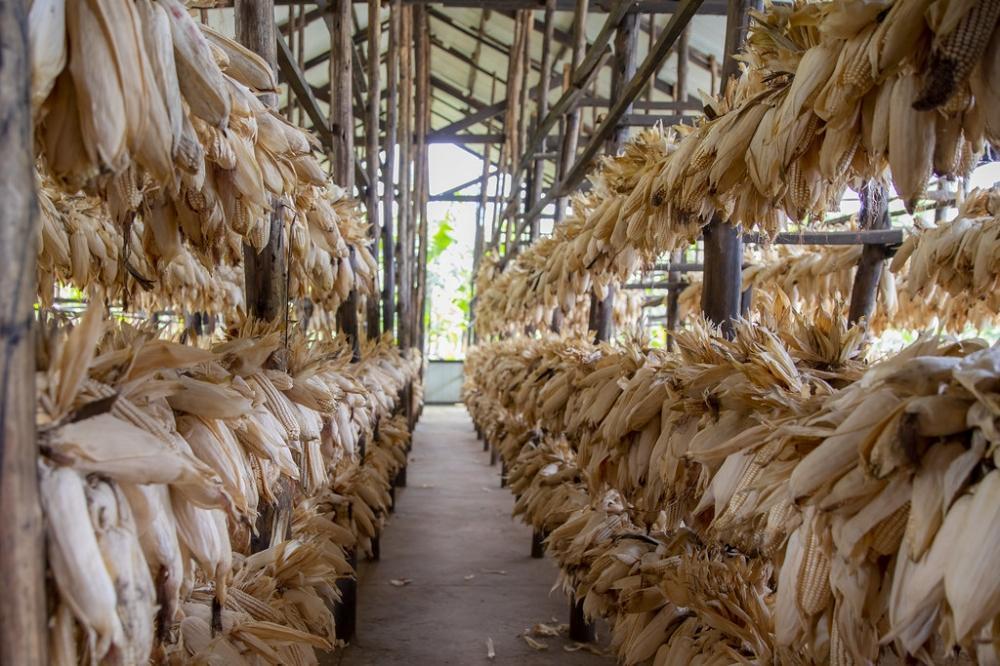Africa-Press – Rwanda. The Seasonal Agricultural Survey for 2025 Season A, released by the National Institute of Statistics of Rwanda (NISR) on June 2, highlights mixed outcomes across key food crops, with notable increases in Irish potato and cassava production, while maize and sweet potato saw declines.
Maize production was estimated at 481,246 tonnes, marking a 5 per cent decrease compared to Season A of 2024. The Eastern Province remained the leading producer, particularly in Nyagatare, Kirehe, Gatsibo, and Kayonza districts.
Bean production experienced a slight drop of 1 per cent, with an estimated 230,456 metric tonnes harvested. The highest levels of bean production were recorded in the districts of Gatsibo, Gicumbi, Kirehe, and Ngoma.
Paddy rice production stood at 69,680 tonnes, representing a marginal 1 per cent increase from Season A of the previous year. Districts with the highest production included Nyagatare, Gisagara, Gatsibo, and Bugesera.
Irish potato production rose to 475,785 tonnes, reflecting a 3 per cent increase compared to the same season last year. The Northern Province led the way, with Nyabihu, Rubavu, Musanze, and Burera districts recording the highest yields.
Cassava production reached 542,874 tonnes, a 5 per cent increase from 2024’s Season A. The highest levels of output were recorded in Ruhango, Nyanza, Ngoma, Kamonyi, and Kayonza districts.
In contrast, sweet potato production fell to 656,320 tonnes, a decline of 5 per cent. Major producing districts included Gicumbi, Gakenke, Nyamagabe, and Nyaruguru.
Banana production was estimated at 1,278,234 tonnes, a decrease of 1.3 per cent. The Eastern Province continued to dominate banana production, especially in Gatsibo, Kirehe, Ngoma, and Nyagatare.
Crop yields mixed
In terms of crop area, yields, and production estimates, maize recorded a national average yield of 2 tonnes per hectare. Small-scale farmers harvested an average of 1.9 tonnes per hectare, while large-scale farmers achieved 4.1 tonnes per hectare.
The total cultivated area for maize was 244,095 hectares, down by 2 per cent from the previous season.
Beans had a national average yield of 705 kilogrammes per hectare. Small-scale farmers harvested 704 kilogrammes per hectare, while large-scale farmers averaged 830 kilogrammes. The crop was cultivated on 327,147 hectares, a slight decrease of 0.6 per cent.
Paddy rice recorded a national average yield of 4.1 tonnes per hectare, with small-scale farmers harvesting 2 tonnes per hectare and large-scale farmers reaching 4.1 tonnes. The cultivated area rose slightly to 17,312 hectares, an increase of 0.8 per cent.
Irish potatoes showed an average yield of 8.7 tonnes per hectare, consistent among small-scale farmers. Large-scale farmers recorded a higher yield of 11.4 tonnes per hectare. The crop was grown on 54,485 hectares, representing a 0.8 per cent increase.
Sweet potatoes had a national average yield of 8.4 tonnes per hectare, though the cultivated area dropped significantly to 82,458 hectares, a 13.8 per cent decline from the previous year.
Cassava’s average yield stood at 13.5 tonnes per hectare for small-scale farmers and 17.9 tonnes for large-scale farmers. While the harvested area was 40,090 hectares, the overall cultivated area decreased by 1.3 per cent to 247,839 hectares.
Banana production yielded an average of 11.6 tonnes per hectare among small-scale farmers and 15.2 tonnes among large-scale farmers. The harvested area was estimated at 109,994 hectares, with a total cultivated area of 268,552 hectares, marking a 1.7 per cent decrease.
The survey indicated that 37.3 per cent of farmers reported using improved seeds. When disaggregated by farmer type, 35.9 per cent of small-scale farmers (SSF) used improved seeds, compared to 85.4 per cent of large-scale farmers (LSF), according to the survey findings.
Non-governmental organisations (NGOs) and private companies were the leading sources of improved seeds, accounting for 41.8 per cent, followed by agro-dealers at 33.2 per cent.
The report also shows that 88 per cent of farmers applied organic fertilisers, while 63.2 per cent used inorganic fertilisers. In addition, 41.9 per cent of farmers applied pesticides to their crops, and 13.4 per cent practised irrigation techniques.
Anti-erosion measures were widely adopted, with 90.3 per cent of farmers implementing activities aimed at preventing soil degradation.
For More News And Analysis About Rwanda Follow Africa-Press






